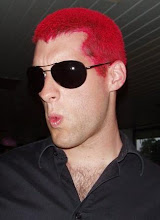Ok, I have finally received my OCA course pack for the Art of Photography and it’s time to get stuck in. Apparently, blogs are an excellent tool for keeping a ‘Learning Log’ for the course so here I go with a fad I’m many years behind on.

Not being the sort of person that particularly likes tools that do things automatically, (car gear-boxes being a big one), I went on and bought a Nikon D5000 digital SLR.
First impressions after fiddling with it a bit; it’s awesome. I’m really glad I spent the extra money after initially planning on a bridge camera and it’s just superb. I bought the camera base with an 18-55mm lens kit and I will probably buy another one shortly, probably a 55-200mm. I will discuss lenses more in the next project.
So, first things first; the instruction manual. I have skimmed through it to get a general feel for the camera’s operation but now it’s time to get into the meat of the content. All 235 pages of it. Ace. To be fair, a good chunk of the manual is about the basics like turning it on and plugging it into a computer, which, if I’m honest, I’m not going to bother reading.

First thing to note about the D5000 is the 2.7” LCD ‘Live-View’ screen on the back. This can be used as an aid for framing pictures instead of the viewfinder and also features a vari-angle screen. Gimmicey. When I first looked into buying the camera I wasn’t really fussed on this feature but it actually comes in useful if you want to take a photo from an awkward angle as you can swivel the monitor in favour of your body. Neat.
The screen also offers a very intuitive menu system for the camera setting that can be easily navigated using the multi selector and other buttons on the back, such as ISO settings, file format, playback, etc.
As with most manufactures in a competitive market, there appears to be a lot of features on this camera that is designed to ‘wow’ you. There is a grand total of x19 scene modes from Portrait to Candlelight, x6 of which can be quickly selected using the mode dial on the top of the camera. The others can be selected using a combination of the mode dial and the command dial. The mode dial also features x2 ‘point-and-shoot’ modes; fully automatic (yuck) and ‘no flash’. What appears to be the most useful function of the mode dial is the quick selection of the P, S, A & M shooting modes:
P – Programmed auto; the camera decides the shutter speed and aperture for optimum exposure.
S – User selects the shutter speed using the command dial and the camera decides on the aperture for optimum exposure.
A – User selects the aperture using the command dial and the camera decides on the shutter speed for optimum exposure.
M – User decides on both the shutter speed and aperture.
To adjust the exposure, ISO settings and other settings requires the user to navigate the menu system using combinations of buttons. So, it’s all very quick and intuitive to adjust the shooting mode.
Half way through the manual and it’s plain-sailing so far. A higher f-stop number means a smaller aperture, increasing the depth of field to bring out details in the fore and backgrounds (good for landscapes). Conversely, a larger aperture (low f-stop) would be better suited for portraits or making objects stand out against its surroundings by blurring details around the main focus. Further to this, when the aperture is at it widest, it’s going to allow a lot more light reach the camera’s sensor when compared to being at its narrowest. Therefore, the shutter speed will have to compensate for the width of the aperture to achieve the desired exposure; the faster the shutter speed, the less light it will let in and vice-versa.
Deciding on the shutter speed can make a big difference in what you are trying to express with the photograph. For example, a fast shutter speed will freeze moving objects, where as a slow shutter speed will blur the motion. So, for a given exposure, fast shutter speeds will require a wide aperture to allow the correct amount of light to reach the sensor and slow shutter speeds call for narrow apertures. So, at this stage, the S & A shooting modes that the D5000 offers are probably going to come in very useful as I learn to fully utilise different shutter speeds and apertures. Also, the bracketing feature where the camera takes the photo at x3 different exposures in sequence could prove useful as I practice with different lighting levels.
Now I’m onto the part of the manual that has me at a disadvantage. I understand what is meant by metering, white balance and flash compensation, but I’ve never actually used them so I don’t know what results to expect or indeed what best to use for a subject. I think with a spare afternoon when I’m back home I’ll set up some still-life out of some household objects, sit down with the manual and experiment.
The next few chapters are Playback, connections, menu guide and settings; skip.
Now, before the last chapter on technical notes there is a chapter about the camera’s in built retouching tools. Do I really want to fiddle around changing colours and balances using the D5000’s onboard tools? I don’t think so – I’m studying TAOP to learn to take a photograph without digital enhancement. This could be something to help pass the time on a train and maybe the fisheye filter could be fun (I certainly don’t have £500 for a real fisheye lens…).
However, if I decide to further study Digital Photographic Practice with the OCA I may read this chapter, but will most likely just use GIMP or Photoshop.

No comments:
Post a Comment